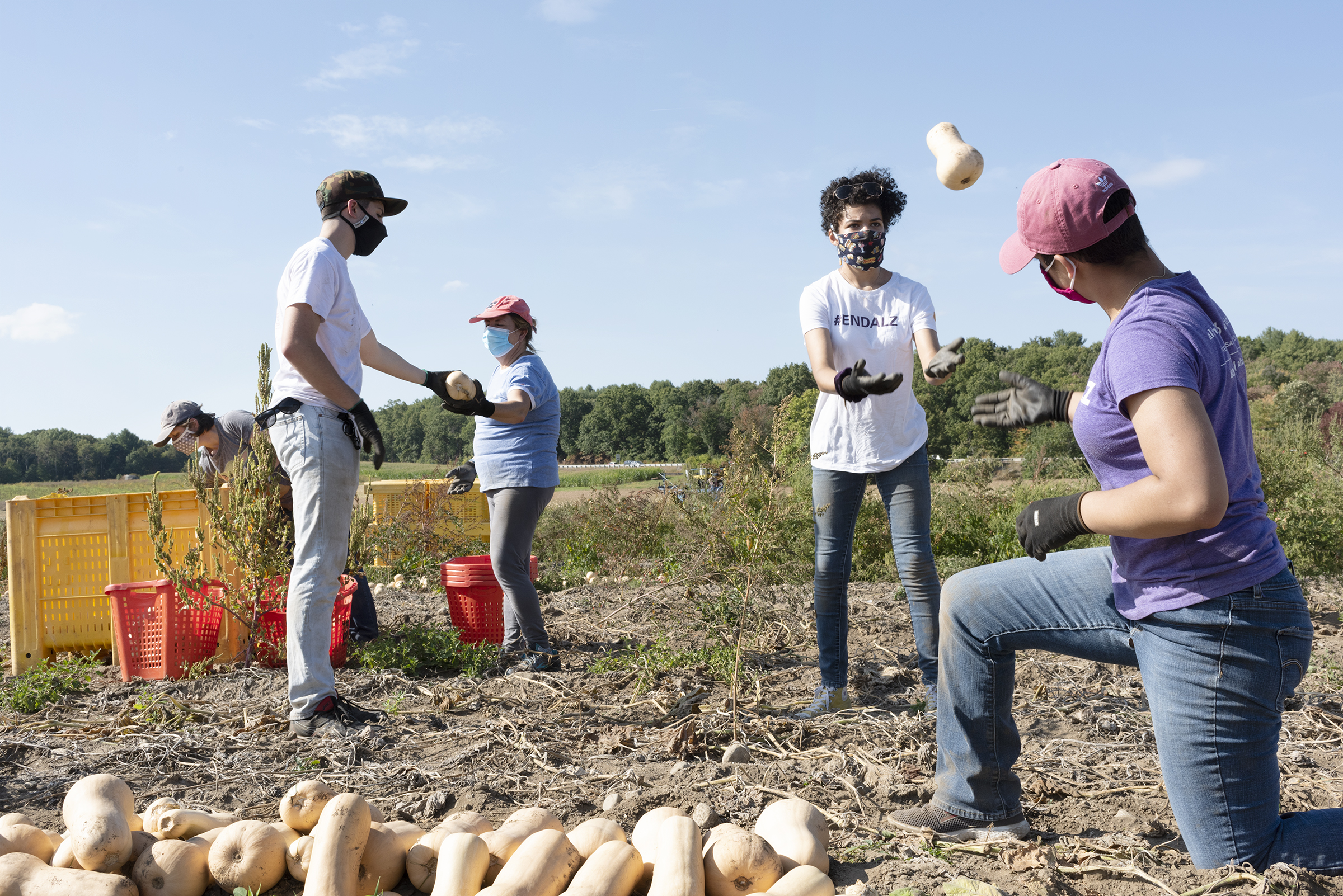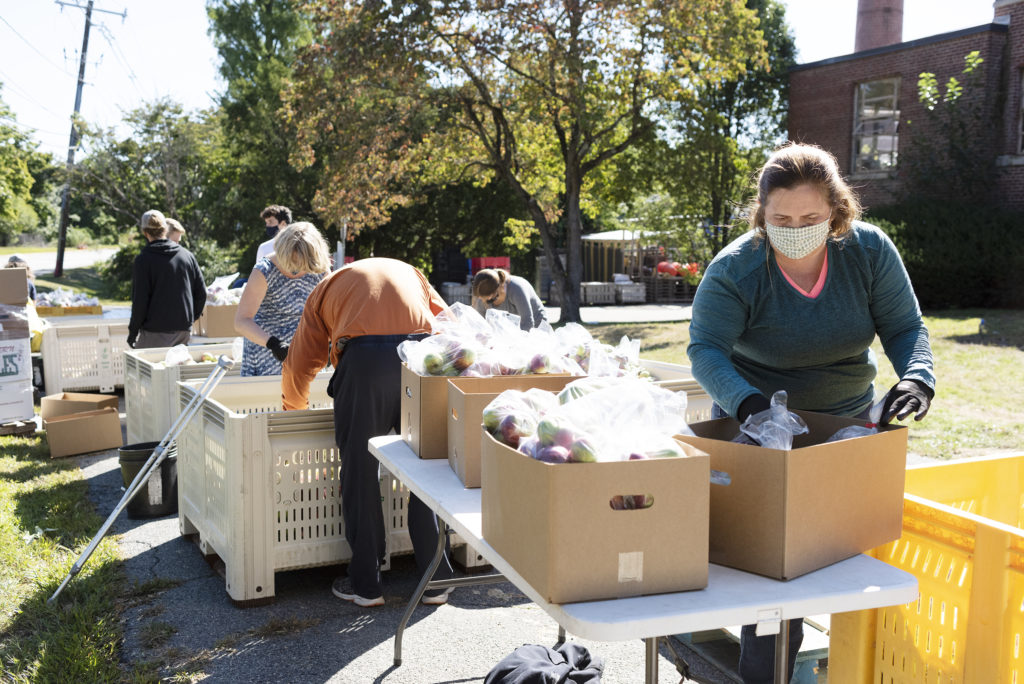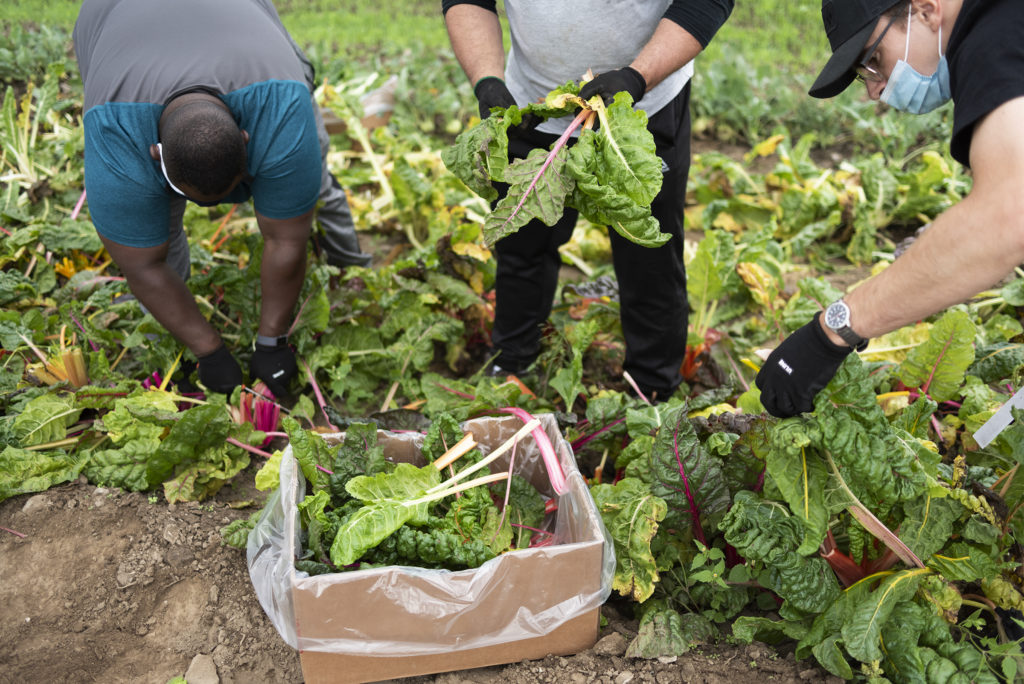
Gleaning, Community Partnerships, and Adaptability at Boston Area Gleaners
14 Oct 2020, by Admin in Harvest Blog, Boston Area GleanersPaul Franceschi serves as a Harvest VISTA at Boston Area Gleaners (BAG) in Waltham, MA, coordinating outreach to the public and managing volunteers. Ultimately, BAG’s goal is to build innovative partnerships with local farms, hunger relief organizations, and social justice-focused food businesses to alleviate food insecurity, promote farm sustainability, and reduce food waste. In addition to on-farm gleaning, the organization maintains distribution channels. engages in community outreach & education, and provides infrastructure & market support for both producers and customers in the regional food system.
Again and again, it’s become apparent that flexibility and adaptability are key to a resilient food system.
The rippling effects of the pandemic on our food landscape are common knowledge at this point. Since March, Massachusetts has had one of the highest unemployment rates in the country, and the state is now seeing a staggering proportion of the community facing food insecurity. On the farmer side, supply chains have been disrupted since day one. As restaurants and other major produce buyers shift schedules and demand, farms end up with food surpluses and financial strain. For larger, highly specialized agricultural operations, the disruption can be devastating, and has resulted in massive amounts of food waste. On the ground, Boston Area Gleaners has seen that smaller farms with CSAs and a diverse array of customers can weather the storm a bit more easily.
Still, all farmers are under strain, and nearly all have more surplus food—which, for a gleaning organization, is an opportunity. The story isn’t as simple as that, however. More than ever, farmers are forced to scramble to find markets for their surplus, rather than simply donating it to an organization like BAG. Paul has found this year that gleans have actually been less frequent, and when the Gleaners do get called to sweep a field, it’s more last-minute than ever.
This is where again, flexibility is key. Gleaning has always been necessarily adaptable and responsive—replying to particular needs, customized harvests & distribution orders, and training teams of volunteers on-the-fly. This year, that flexibility has become the imperative.
In his regular communications with the public as Outreach Coordinator, Paul has been inspired to be able to see firsthand volunteers’ passion for making the work happen, rolling with the punches, and getting into the fields. With the Fall harvest season and a rise in end-of-season surplus, Paul began coordinating community groups—churches, youth groups, and rotary clubs—to lend a critical hand.


Working with the BAG Operations team, Paul developed a timeline for teams of community volunteers from various local organizations to come out together. Coordinating these new partnerships is a unique challenge in a year like this, not only because most folks involved are new to the organization, but also because securing gleaning projects well in advance is nearly impossible.
The solution has been to embrace flexibility. Groups confirm a date at the outset, and from there, BAG reserves the time slot for them until a gleaning project becomes available, or, if no local farm has surplus to harvest, the project shifts into a produce packing project at BAG’s headquarters. Having this communicated to them from the start, groups have proved more than willing to adapt, understanding that uncertainty in these times is a necessary part of the process.
Ultimately, working with community groups proved uniquely rewarding as well. There’s a particular excitement that comes with a person’s first glean, which can be seen again and again as these teams enter the fields, observe how their food is grown, and develop a knack for cutting the perfect chard leaf. Moreover, after surveying many seasonal volunteers, Paul learned that a sense of camaraderie is one of their favorite things about working with BAG—and for community groups volunteering together, that collaborative spirit is amplified. Folks would encourage each other as they lobbed butternut squash across the field into the proper bins, and truly worked as a team to process apples in various stages of sorting, bagging, and packing.
At the end of the day, bringing out community groups deepens ties to the greater public, and diversifies local support. As with everything else at this moment in time, this broad support network is crucial to sustaining community-based work and making the necessary connections in a broken food system.


